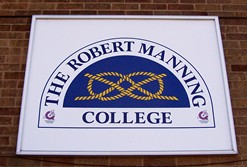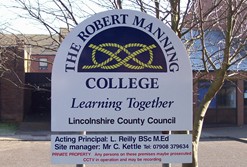|
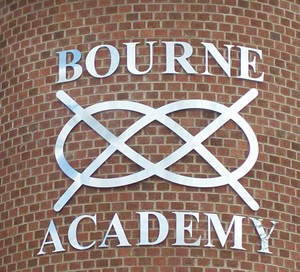 |
FORMERLY BOURNE COUNTY SECONDARY SCHOOL,
THE
ROBERT MANNING TECHNOLOGY COLLEGE AND THE
ROBERT MANNING COLLEGE
|
The college has evolved through several stages since its earliest days in 1877. The birth of state education through the Elementary Education Act of 1870 brought about the opening of the Star Lane Board School on
2nd July 1877. Star Lane is now known as Abbey Road. The original log books from this school still exist and its early history is meticulously documented in copperplate handwriting by its first headmaster, Joseph
Davies. Under his leadership, there were three monitors, Arthur and Harry Smith
and Frederick Warren who were "desirous of becoming pupil teachers." Thirty-six
boys were admitted, but by July 20th there were 90 on the roll with ages ranging
from seven to 15 years.
Singing was a popular feature of the day's activities and reference is made to Arthur Smith accompanying several pupils who were members of the church choir to Matlock, a considerable journey in those days. The school remained open until August 17th when harvest was in full swing and with attendance declining, the head teacher decided to close for one month. Interestingly, when it reopened, there was a very poor attendance because families were still out gleaning. In December, girls were admitted but were kept together in one class under the direction of Miss Osborn. Strict discipline was very much the order of the day and the head teacher writes: "A big boy in the school is constantly giving trouble, is disobedient and seems impervious to good counsel. I tried the effect of a good caning". There seemed to be little structure to the timetable and reference is made to classes being dismissed as late as 4.40 p m with half-day holidays being granted by the head teacher as he decided necessary. On one occasion, he even closed for two days on account of Bourne Fair.
In the course of the next few years, mention is made of French and Latin being
introduced for some pupils and an evening school was opened for 50 boys and
girls. By 1880, there were 419 on roll, 154 boys, 125 girls and 140 infants, but
the average attendance was only 58%. Euclid, geography, history, arithmetic,
algebra, music, English grammar and composition, together with handwriting, were
now established as parts of the curriculum. Inspections appear to have taken
place every year. Joseph Davies remained at the helm until the summer of 1920 when he resigned
through ill health and the school fell into decline, both in numbers on the roll and in attendances.
Harry Goy, who became headmaster from the autumn term in 1920, changed the situation
dramatically. He introduced handicrafts, gardening and set up a football team.
The school flourished under his leadership and several pupils were rewarded with
county scholarships to attend Bourne Grammar School. In 1946, Leslie Day was appointed headmaster, moving from the grammar school where he had been head of the French department. During his first year, he appointed
Percy Wilson and Louis Decamp to his staff and it is recorded that when the annual sports day was held on the Abbey Lawn, there were over 1,500 people in attendance.
In 1946, the school began operating on a split site when temporary buildings were opened in Queens
Road to cope with increased class sizes. These wooden huts, known as HORSA, or
Huts Occasioned by the Raising of the School Leaving Age, were still in use
almost 60 years later as the town's youth centre but were finally demolished in
2004. In July 1958, new extensions were opened in Edinburgh Crescent by the Lord Lieutenant of Lincolnshire, the Earl of Ancaster, when 620 people were crammed into the hall. The school was now totally separated from the one in Abbey Road and became known as the Bourne County Secondary
School.
|
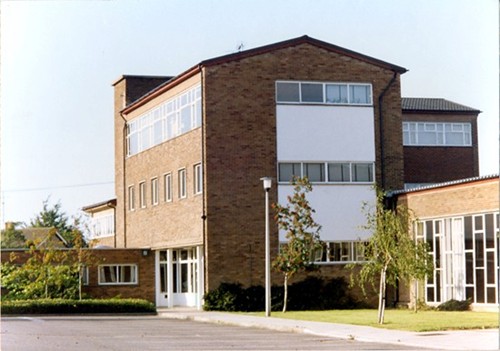 |
|
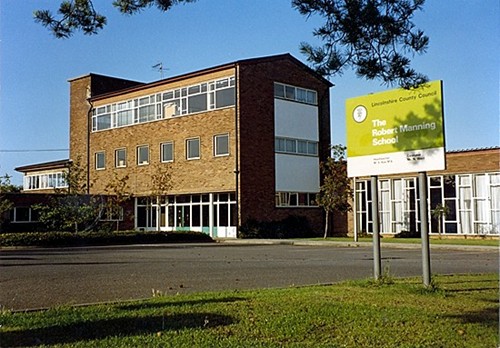 |
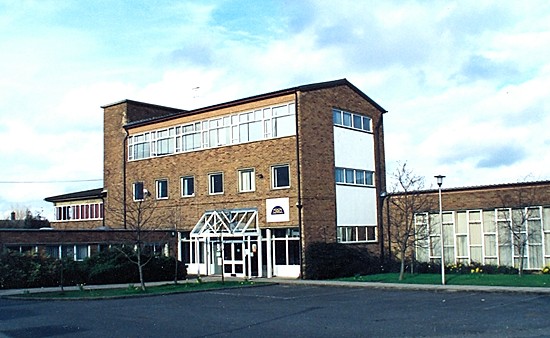 |
|
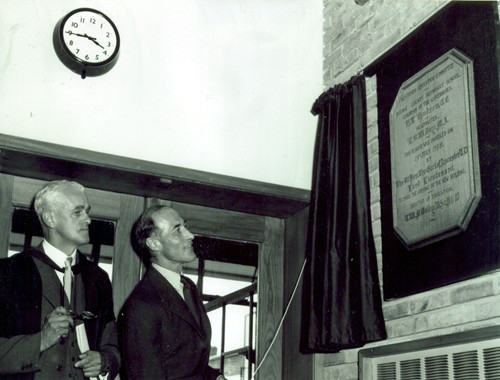 |
|
Headmaster Leslie Day (left) with the Earl of
Ancaster at the official opening of the new school extensions in 1958 when
a commemorative plaque was unveiled to mark the event. It was
removed during work on extensions to the premises in 2003 and taken away
to be cleaned but was lost and so a replica was made and restored to its original place on Tuesday 15th July
2008 when the unveiling ceremony was carried out by Lord Ancaster's
daughter, Lady Jane Willoughby, who is pictured below with the college
principal, Laurence Reilly. An additional plaque was also unveiled to
commemorate the event. Mr Day's daughter, Mrs Marjorie Townley, travelled
from her home at Newark, Nottinghamshire, to attend the event with other
members of the family. "We are delighted about the restoration of the
plaque to its rightful place", she said. "It is also a wonderful
experience for the family to return to the school, a visit that has
brought back many wonderful memories." |
|
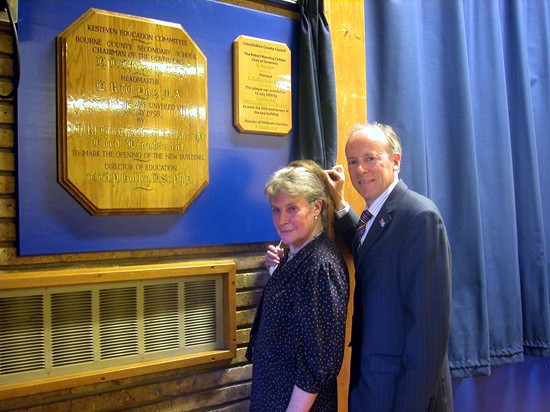 |
|
EARLY DAYS AT BOURNE COUNTY SECONDARY SCHOOL
In 1965, the headmaster was Mr L R W Day MA who had
17 teaching staff and one part time assistant. There were 354 pupils (173
boys and 181 girls) and 202 pupils stayed to lunch each week and 60 had
milk. |
Mr Day retired in 1968 and Howard Bostock was appointed headmaster. There were 375 pupils on roll at this time but when a summer gala was arranged it was estimated that over 2,500 people were in attendance on the playing field. The school grew steadily over the next few years with mobile classrooms becoming a familiar feature
but the temporary buildings remained a constant source of irritation, a
situation colourfully described by Mr Bostock in a landmark address on Speech
Day held on Monday 22nd May 1978 when he said that the school had lived up to
its reputation as a disaster area during the previous twelve months. He told
parents:
"On the evening of January 11th, at the height of a
northerly gale and with several inches of snow on the ground, the Queen's Road
boiler burst. In February, with the temperature well below zero, one of the
boilers in this building disintegrated. Last term the school was decimated by
the flu epidemic and for only 3½ days during the spring term the school had a
full staff. Our buildings have survived intact but they have been patched up so
much that we are almost running out of patches. What can you expect when you
have almost 600 children housed in permanent accommodation for only 235, only
six permanent classrooms for this number of children, the rest of the
accommodation being temporary? It is not perhaps for nothing that the school is
designated by the county as a disaster centre.
"The assembly hall floor has also been cut up several times during the year
because of expansion and shrinkage but the ground below is at last clear of
water. In these difficult financial times, I cannot see a lot of hope for the
school buildings, when it now costs more to paint the school than it did to
build it. It is an indication of the lack of a building programme for this
school when we regard as heaven-sent the arrival of two mobile c1assrooms,
second hand from another school, covered in graffiti.
"Educational standards have been good and examinations results high and there
have also been sporting successes and much activity in fund raising. Progress
has been made but it is the kind of progress which makes one, after skirting
round the edge of the pit for years, jump right into the middle of it. The
Secretary of State for Education and Science, Mrs Shirley Williams, has dug her
heels in and said that Bourne will go comprehensive by 1980, The Lincolnshire
education committee has equally dug its heels in and said that it is a financial
impossibility for Bourne to become comprehensive by 1980. So there we are. And
while others deliberate and argue, we get on quietly with the job of educating
our children. Let me add that while this argument is going on, Bourne is
enjoying the privilege of having four schools. Each is of a different nature.
They all work together in peace and harmony and produce a local educational
system which is the envy of many people in this county and others."
In the event, the school never became a
comprehensive. Mr Bostock retired in 1980 and
Louis Decamp was appointed in his place with Percy Wilson as his deputy. Then
in 1984, Michael Kee took over the reins as headmaster, now known as the
principal, and there were 650 pupils on the roll. The school grew rapidly over the next few years with the opening of new craft, design and technology rooms and new science laboratories. In 1987, the name was changed to the Robert Manning School, after the 14th century monk from Bourne Abbey who is credited by historians and linguists as the first man to write English as we read it now.
September 1988 saw the birth of the sixth form with just 13 students in its first year. The town was growing at a considerable rate, increasing pressure for the expansion of facilities and so a new teaching block was opened in March 1989 by Kenneth Baker, the then Secretary of State for Education and Science.
The previous year, in April 1988, a public leisure centre was built on adjoining land
at a cost of £½ million and the school was able to enjoy the benefits from a "chance to share" scheme including a magnificent sports hall that was officially opened by Emlyn Hughes O B
E who unveiled a commemorative plaque. The centre offered a variety of sports
activities including badminton, netball, basketball, volleyball, table
tennis, indoor soccer, hockey, bowls, trampolining, gymnastics and indoor
cricket and there was also a viewing balcony for the sports area.
|
The sports hall was officially opened in 1988 by Emlyn Hughes
OBE (left) who was persuaded to perform the ceremony and unveil a
commemorative plaque by his old friend, the prominent Bourne sportsman
Terry Bates (right). |
 |
The culmination of a period of tremendous growth and progress was marked in 1999
when technology college status was granted. There are now more than 1,000
students on the roll with 150 in the sixth form administered by a staff of 100.
From its small and even humble beginnings, the Robert Manning Technology College
is the perfect example of a school meeting the challenge of an expanding
population and society's changing educational requirement and as a result, it
has become a learning institution of which the town can be justly proud.
In
2001, Geoff Greatwood, the vice principal, was appointed to succeed Mr Kee. The pupil roll
had then reached 1,139,
there was a staff of 118 and an annual budget approaching £4 million. New
classrooms were planned early in 2007 with the announcement of a £2.3 million
investment by Lincolnshire County Council. The money will be spent on replacing
outdated mobile classrooms which make up around one fifth of the available
teaching space but have become run down in recent years.
Mr Greatwood retired at the end of the summer
term in 2007 after completing 35 years at the school. He was succeeded by
Laurence Reilly, aged 52, who had spend six years as vice-principal. He was born
and educated at Glasgow and read mathematics at Manchester University and began
his teaching career in Manchester and Cheshire. He moved to Lincolnshire to take
up a post at Stamford School before becoming head of mathematics at the Robert
Manning College in 1993. He lives at Morton, near Bourne, with his wife Sarah
who is assistant principal at the Arthur Mellows Village College at Glinton,
near Peterborough.
The college was awarded special status at the beginning
of the autumn term in September 2007 when it was given a new title as the Robert Manning
College specialising in Technology and Vocational Training but it was also
announced that it would be known simply as the Robert Manning College. The
acting principal, Laurence Reilly, explained that the new name would reflect the
college's position within the town as an establishment specialising in the two
areas of technology and vocational education and the improved status would also
mean an extra £400,000 in funding over the next four years. He added: "The new
specialism means that we are better able to prepare people for the world of work
whether students leave us at the age of 16 or 18 or endeavour to go on to
university."
The college celebrated its 50th anniversary on
Tuesday 15th July 2008 with the unveiling of two commemorative plaques by Lady
Jane Willoughby. The college principal, Laurence Reilly, told
the gathering: "This is an opportunity to take a break from our agenda of
preparing the next generation of young people to meet the challenges of the 21st
century and to reflect on the successes of previous generations in providing the
foundations for what we have today." In her speech, Lady Jane paid tribute to the
progress that had been achieved during the past half a century. "Congratulations
are due to the establishment becoming a college of technical training and
vocational studies", she said, "and of fulfilling the expectations of the
founders."
Further extensions were added to the school in
February 2009 with the opening of a new block containing ten classrooms at a
cost of £3 million. The additional space will accommodate the modern foreign
languages and history departments, additional classrooms for English, sports
studies and an information technology suite for specialist diploma courses. All
of the rooms have been equipped with electronic whiteboards. Meanwhile, work
continues on the oldest part of the main school building which is being
refurbished to provide five seminar rooms for sixth form lessons.
In May 2011, the college applied for academy
status under the provisions of the Academies Act of 2010 which enabled all
schools to become state funded and independent of local authority control. The
conversion was part of the coalition government's plans for a reformed system of
strong, autonomous schools, to promote innovation and flair by giving them more
freedom to decide how best to meet the needs of their students, parents and the
wider community and any school with an outstanding report from Ofsted was able
to apply for the new status, a condition fulfilled by the Robert Manning College
in October 2008.
The school's budget will continue to be based on funding formulas set by the
Department for Education although a portion of this would still come from the
local authority. An academy trust will be set up to own the school's assets,
such as land and buildings, appoint governors, employ staff and agree their pay
and conditions. The college will also be able to set its own admissions code to
decide which pupils will be given places, and take other decisions regarding the
curriculum, the length of term and school days and even the style of a new name.
"Given our strong links with the local community, the name of the town might
again become the key part of the academy title", said the principal, Laurence
Reilly in an interview with the The Local newspaper (May 20th). "The
extra funding that would come with the change of status would enable us maintain
current staffing levels while continuing our extensive programme of investing in
further improvements to buildings and facilities. One key aspect that will
continue is our commitment to achieving ever increasing educational standards is
a modern friendly and supportive environment."
The school governors met on June 14th to make a final decision on proceeding
with their application and after completing the process of conversion, the
college re-opened for the autumn term on September 1st as Bourne Academy. The
new status was formally observed on Friday 21st October 2011 with an official
opening ceremony attended by a large number of guests, the governors and the
Mayor of Bourne, Councillor Brenda Johnson, who also planted a commemorative
tree in the grounds. This was the first day of the autumn half-term holiday and
many pupils volunteered to show visitors round and to stage a wide range of
displays reflecting the work of the school including dance, sport, drama and
music. "This clearly demonstrated the pride they have in their school and the
future for Bourne Academy is indeed bright", said the principal, Laurence
Reilly, who will in future be known as the headteacher.
By September 2013, a total of £382,000 had been
spent the construction of new buildings and the refurbishment of existing
facilities at the school, the projects including the block of four classrooms
housing the geography department with IT hardware, projectors and digital
visualisers to enhance the learning experience, new changing rooms, toilets and
showers for the physical education department and a re-designed food technology
room. The improvements were funded through the increased revenue available to
the school due to its new academy status.
|
BOURNE ACADEMY TODAY |
|
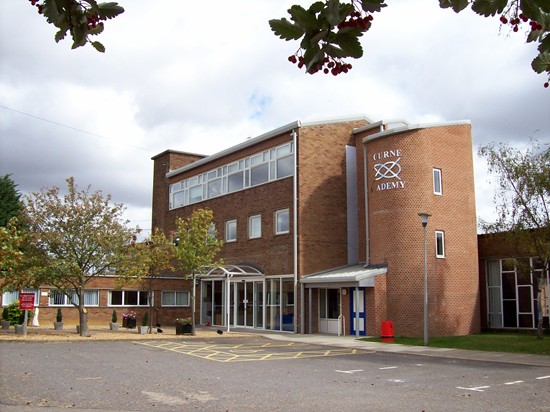 |
|
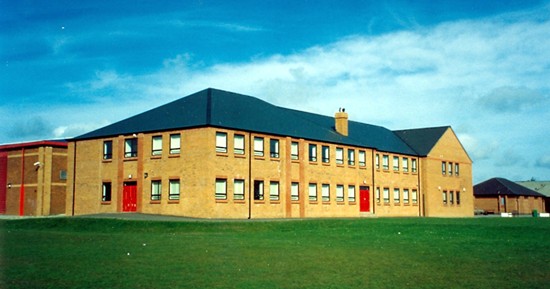 |
|
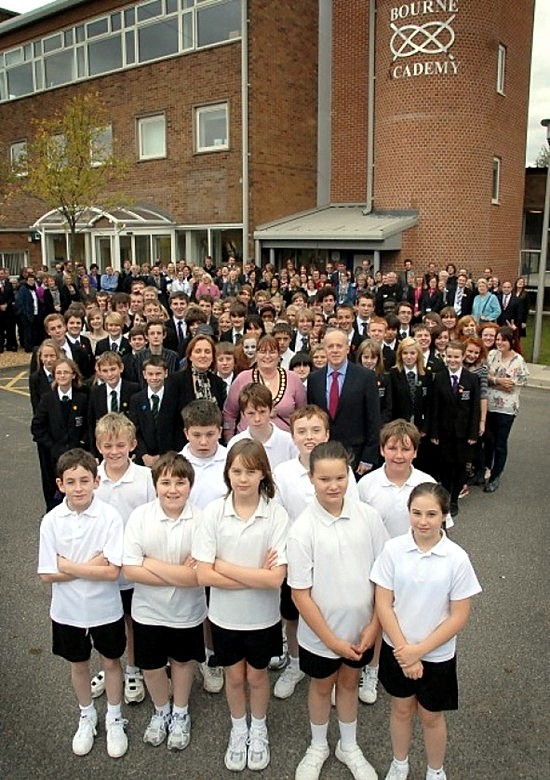
Official opening of Bourne Academy in October 2011. |
|
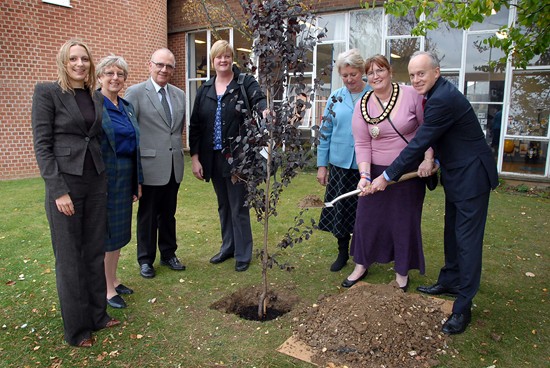
The ceremonial planting in October 2011. The tree was
a purple
leafed
plum (Prunis cerasifera nigra).
IN THE PICTURE: Liz Dyer, Gill Stoneman, John
Kirkman (chairman of the governors, Abbey CE Primary Academy), Clare
Woolsey, Councillor Charlotte Farquharson (Lincolnshire County Council),
Councillor Brenda Johnson (Mayor of Bourne) and Laurence Reilly (headteacher). |
|
THE SCHOOL IN PAST TIMES |
|
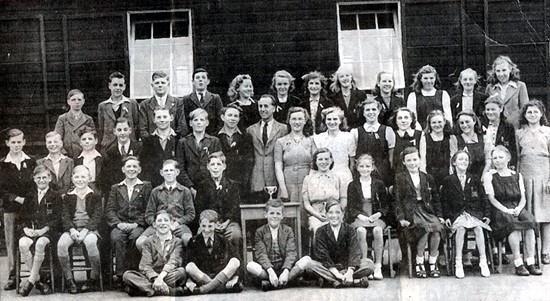 |
|
This picture of pupils at the former Bourne County
Secondary School was taken on sports day, 16th July 1948, and shows
members of Harrington House, one of the school's four houses which won the
tug of war trophy that year, the others being Ancaster, Willoughby and
Hereward. The buildings in the background are the famous HORSA wooden huts
which were finally demolished in 2004, having been in use for 60 years,
first as classrooms and later as the town's youth centre. |
REVISED SEPTEMBER 2013
See also
The school log books
Punishment book
Rowing boat gift
Leslie Day
Geoff Greatwood
Demolition of the old classrooms

Go to:
Main Index Villages
Index
|






